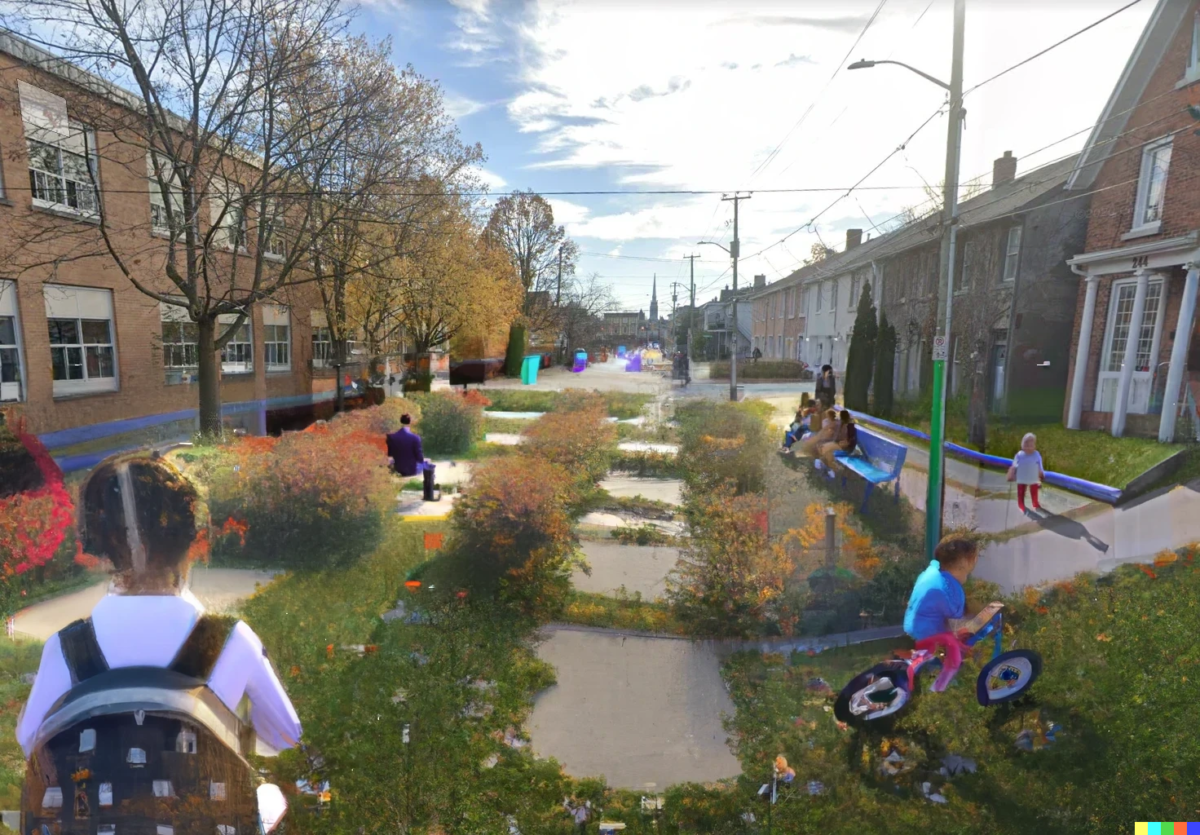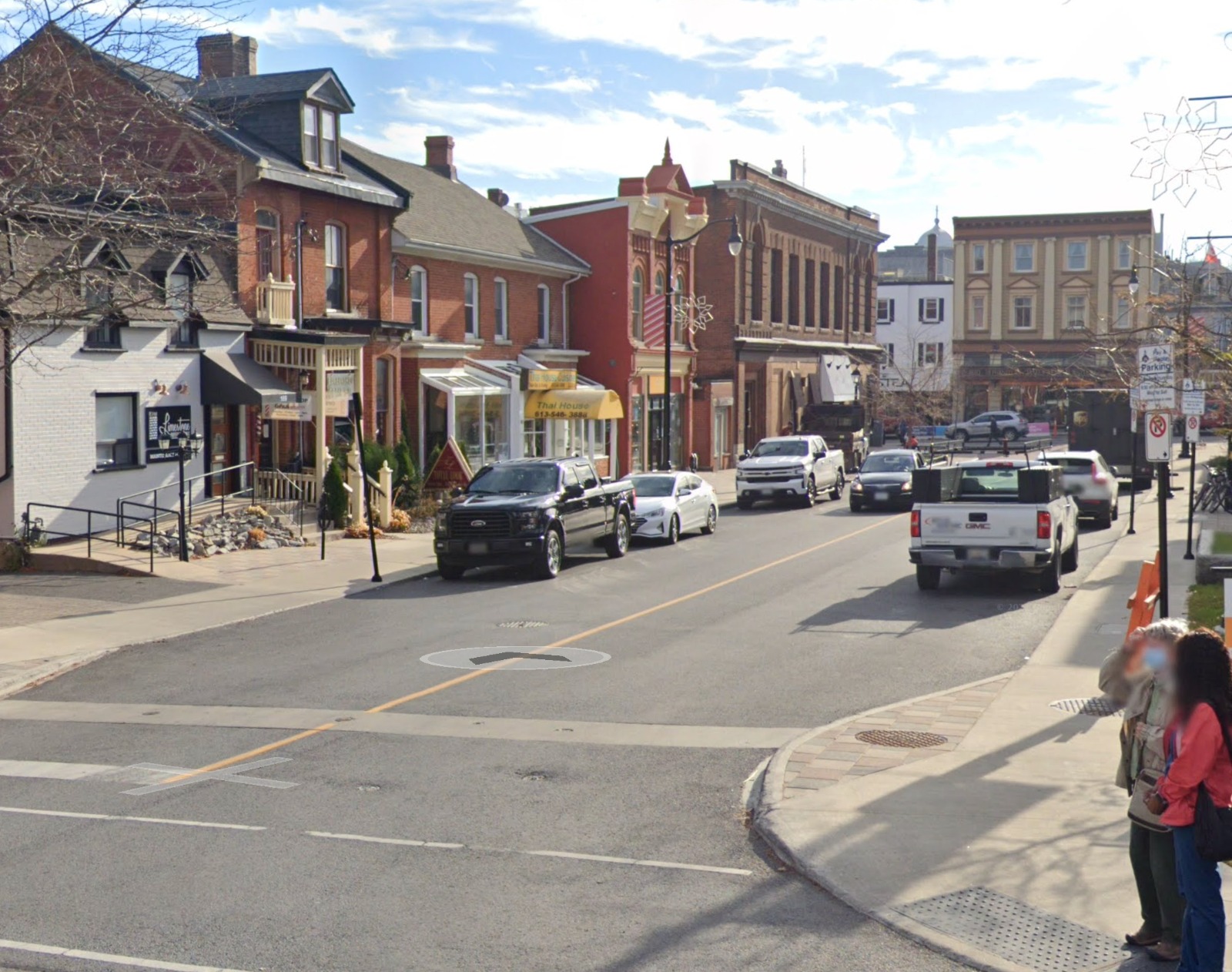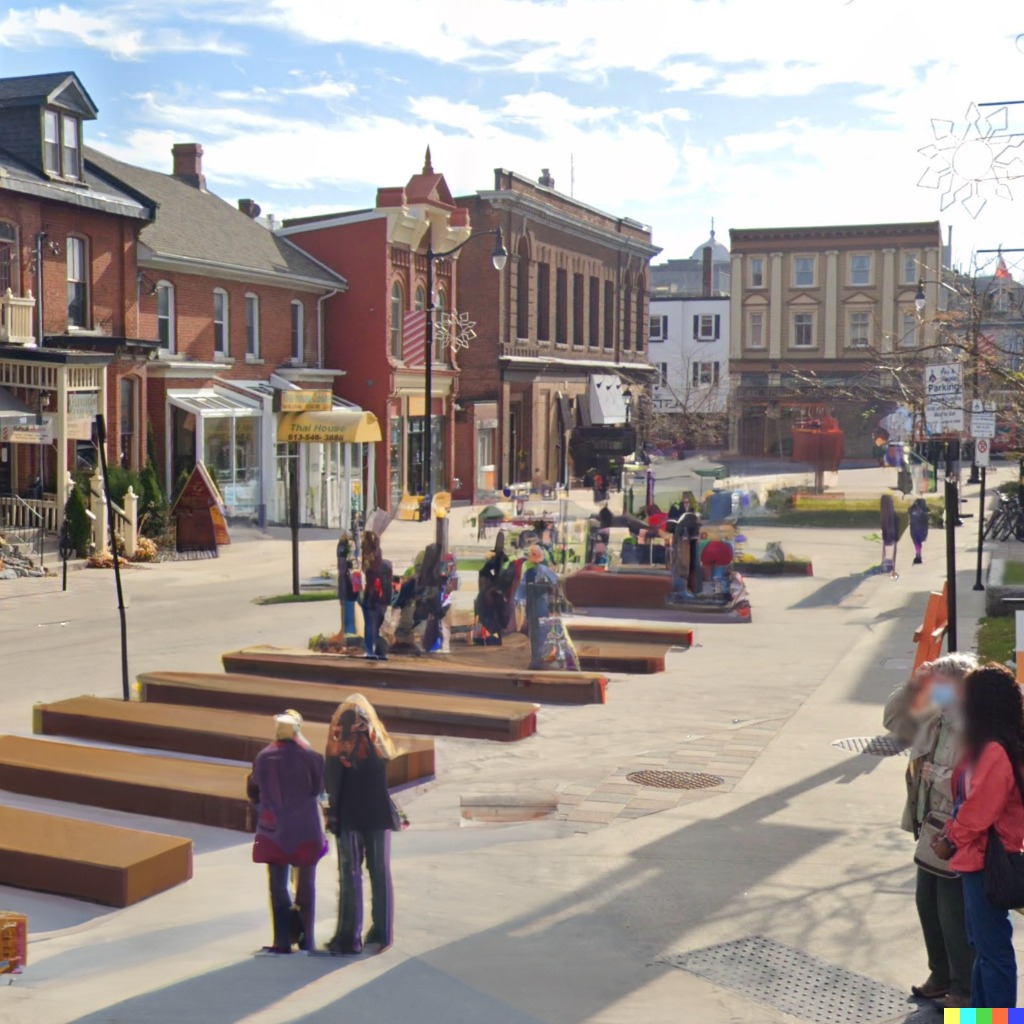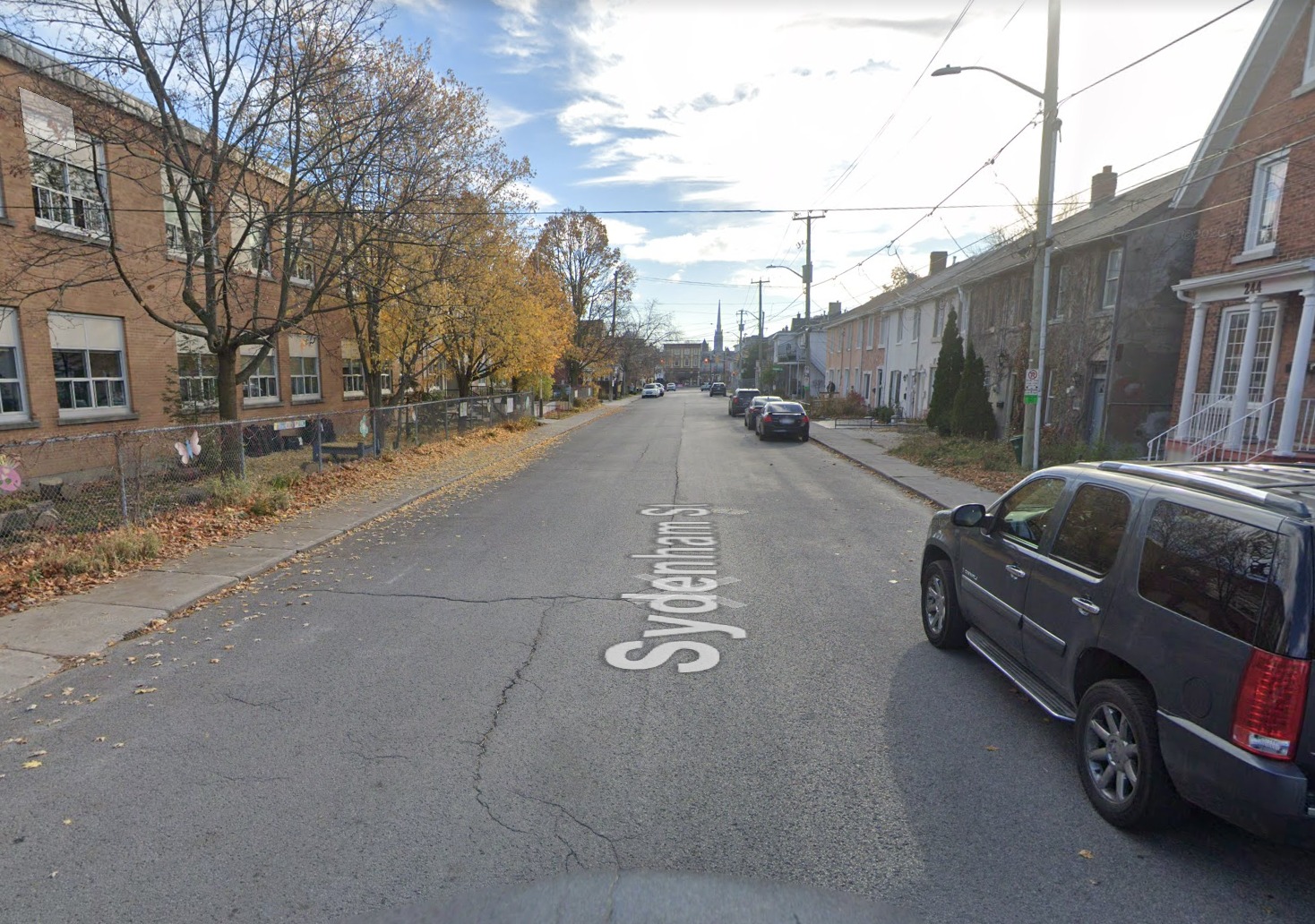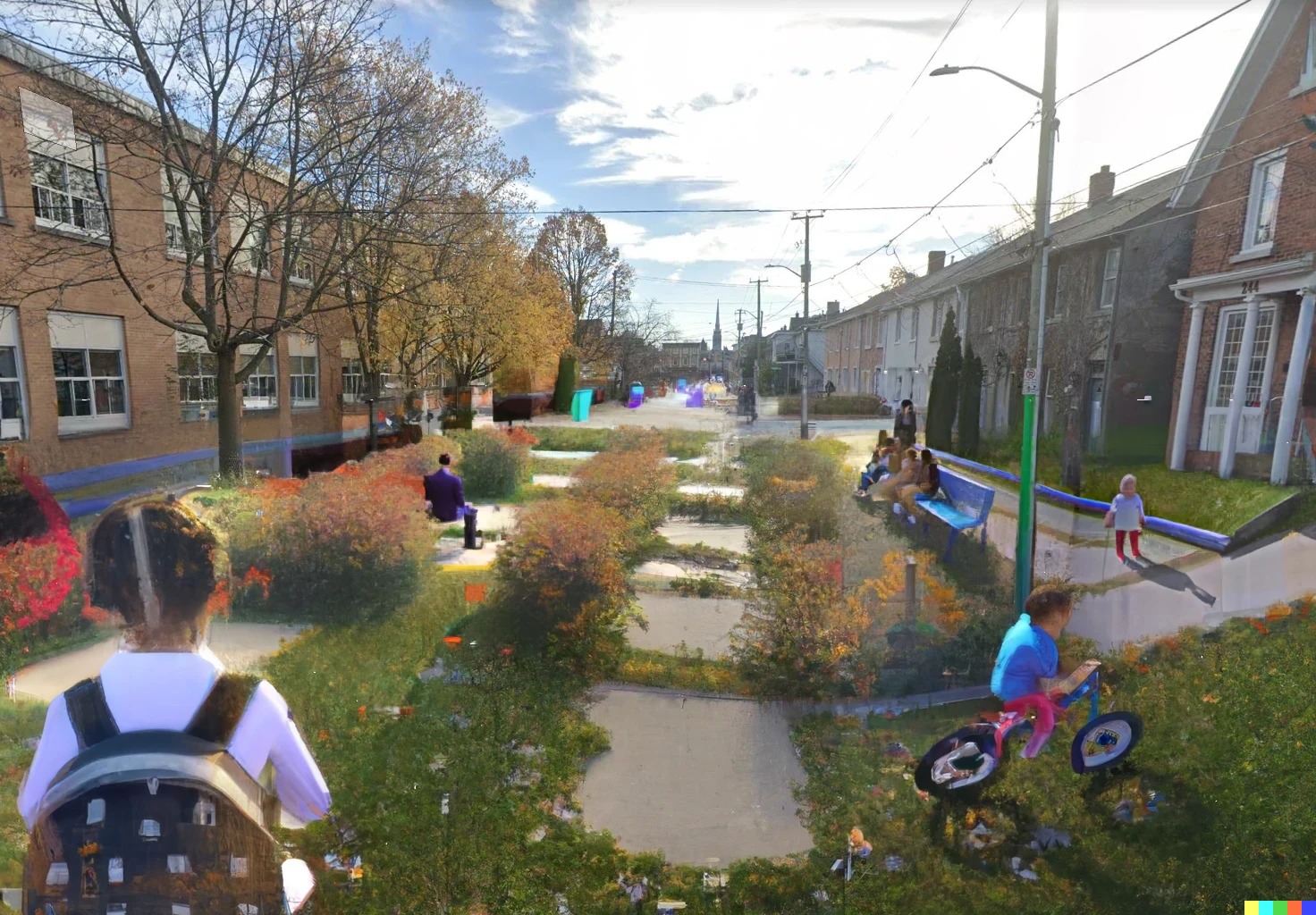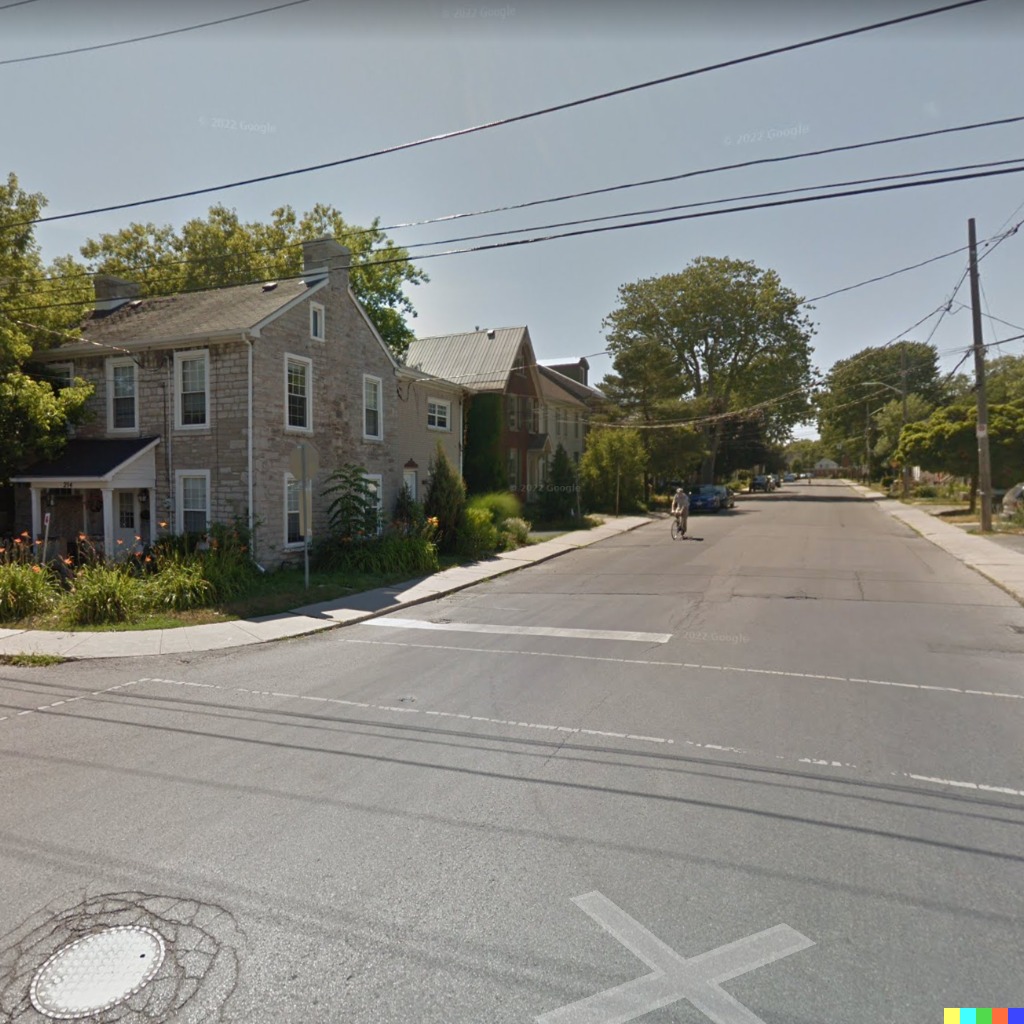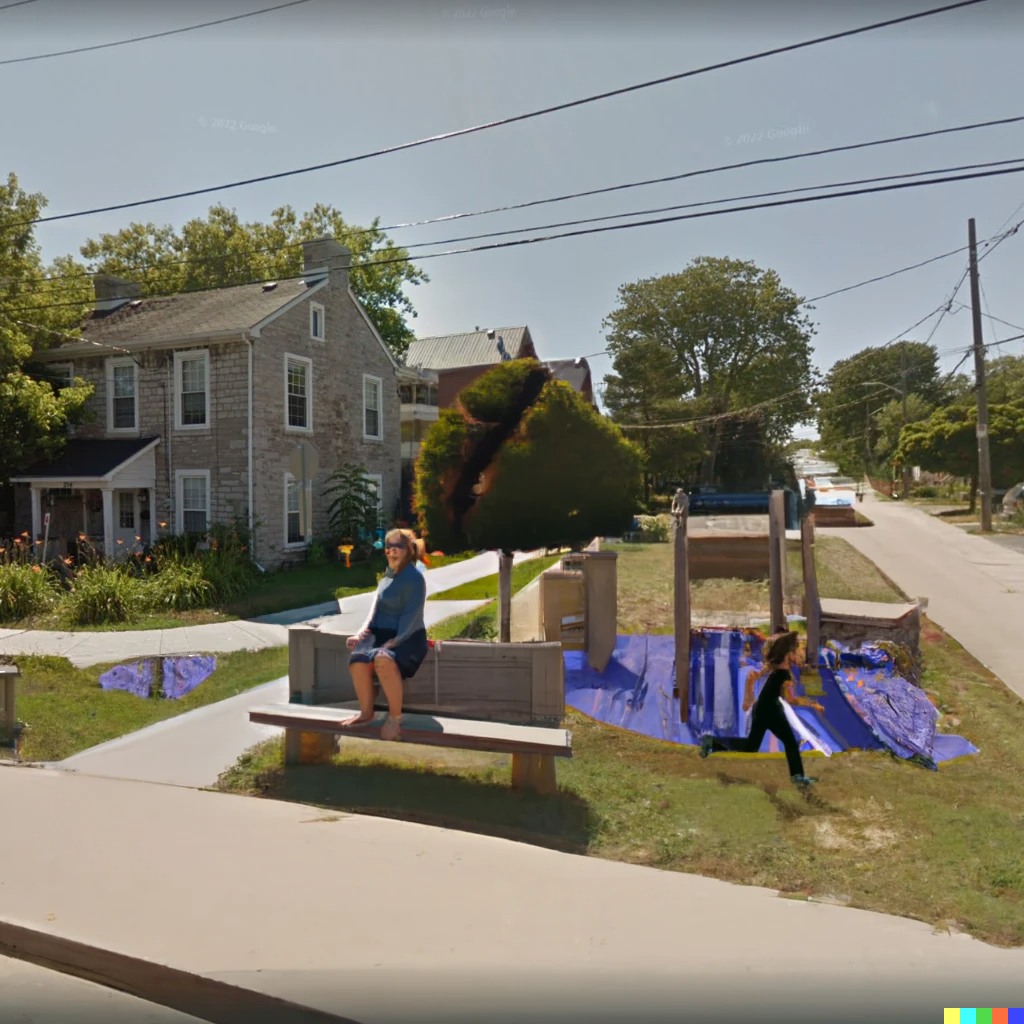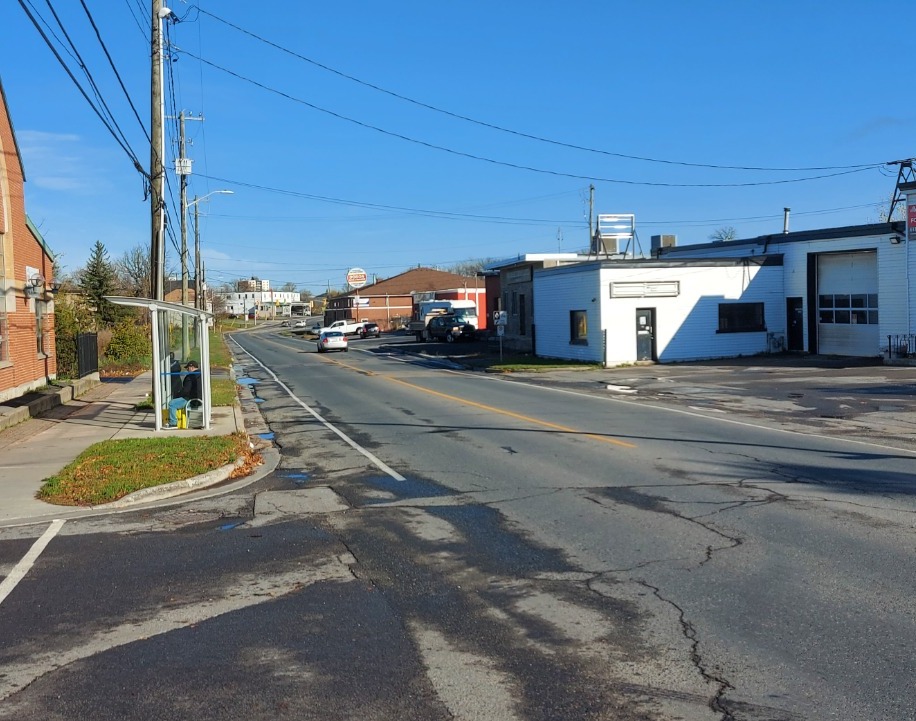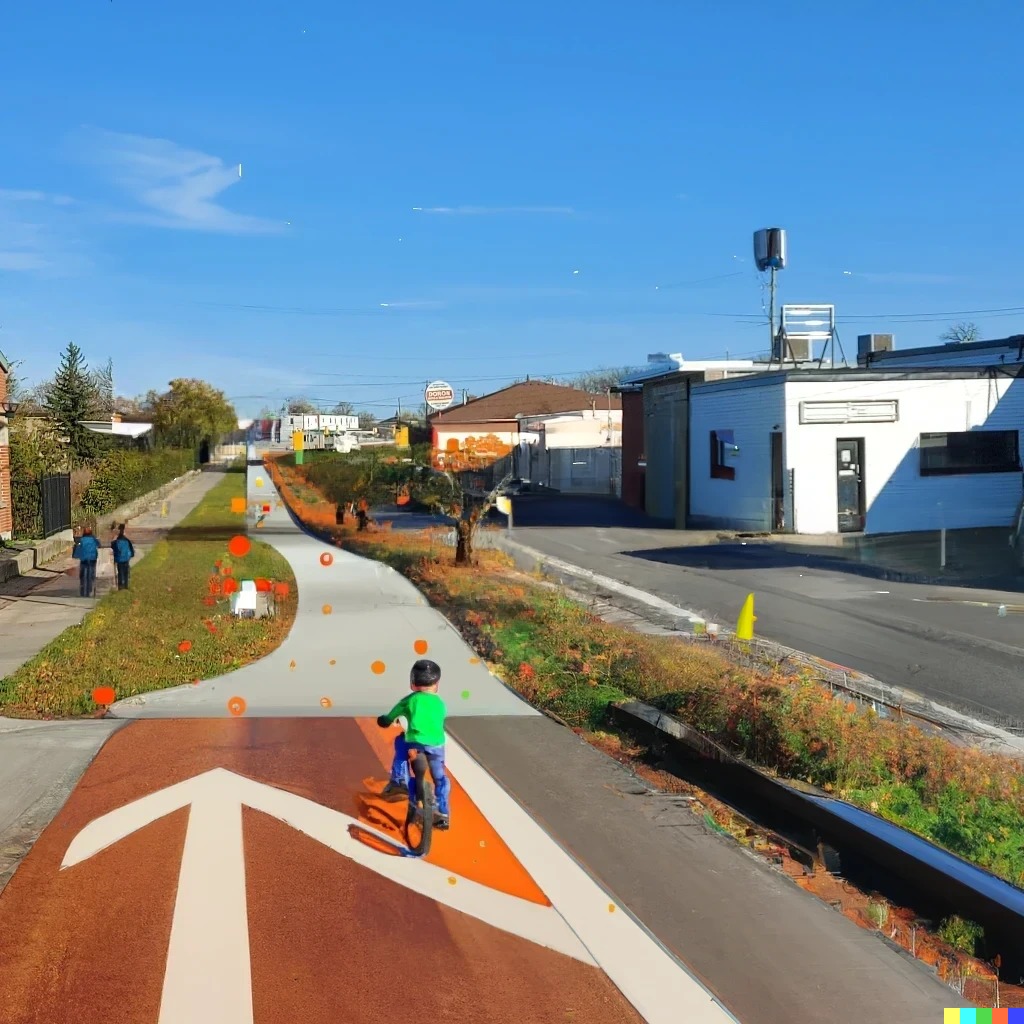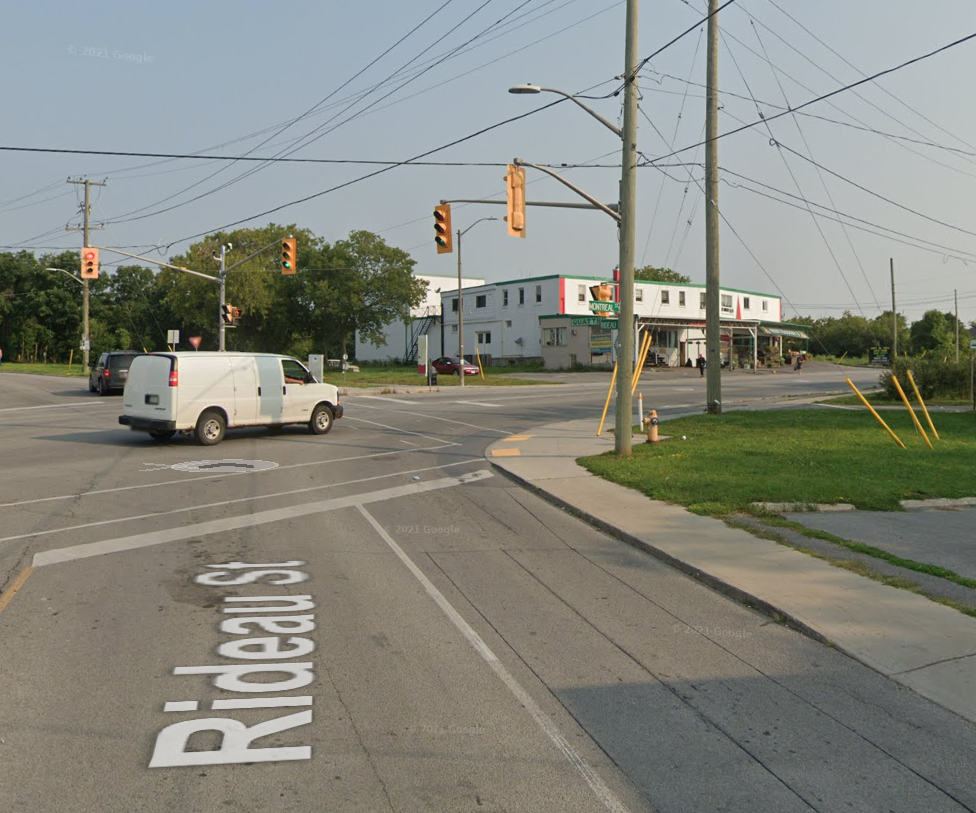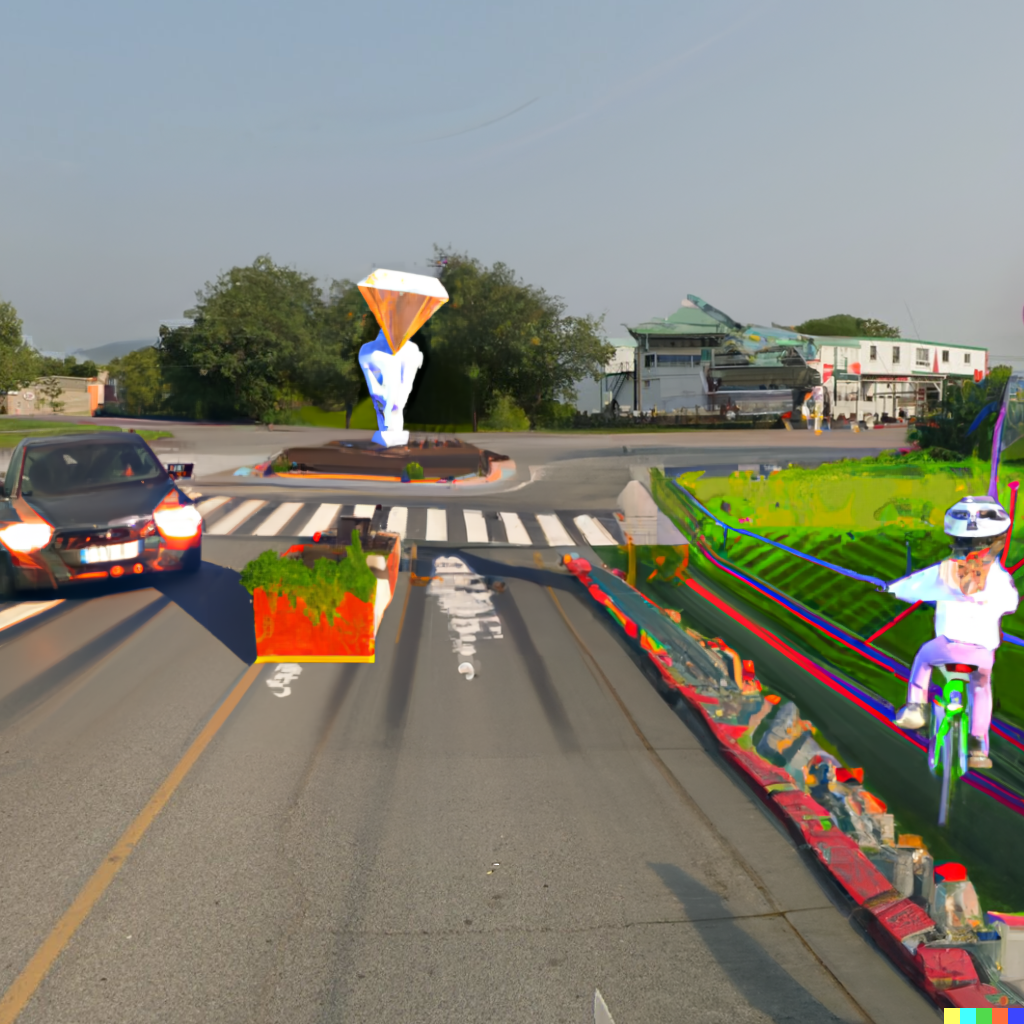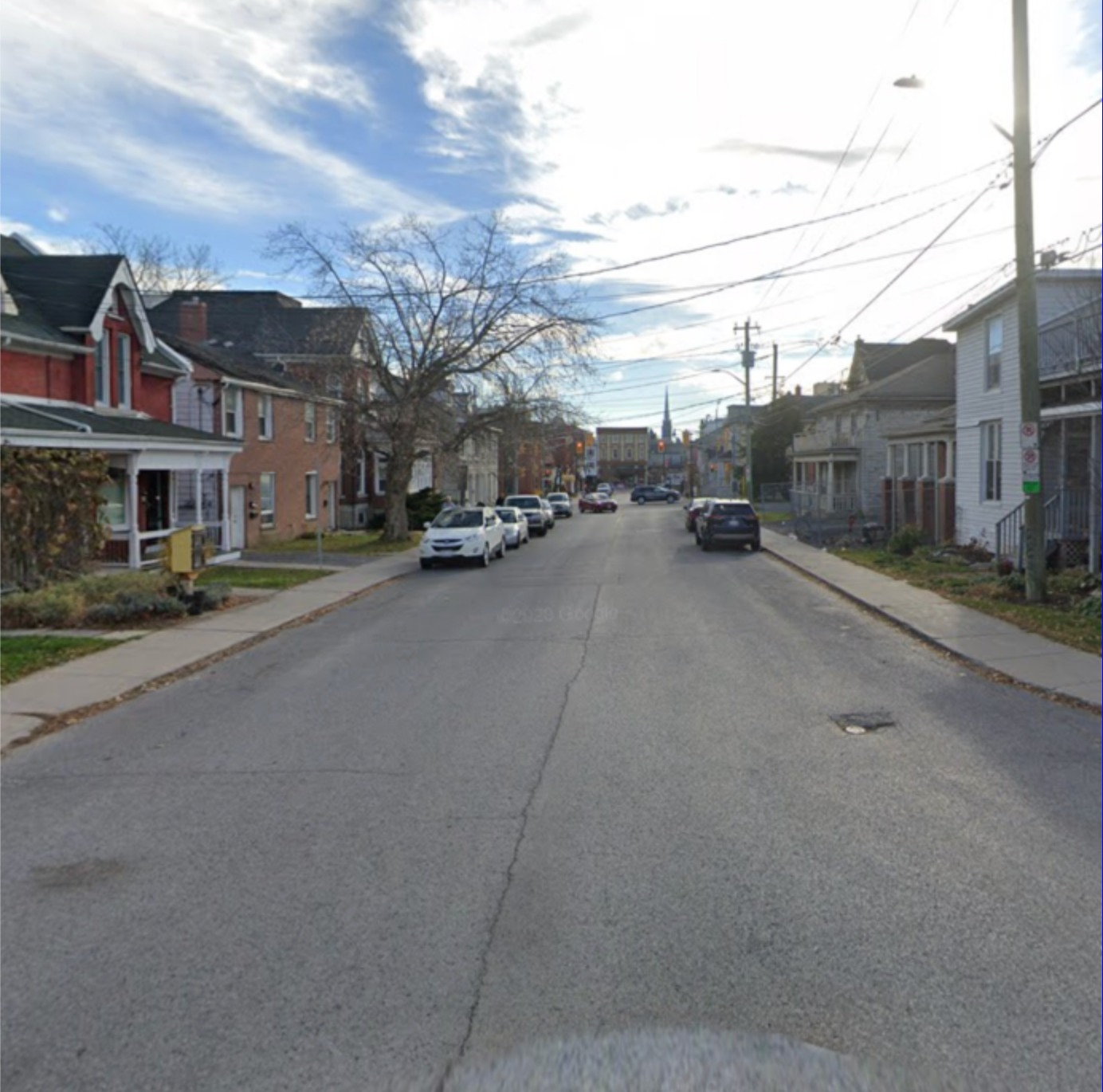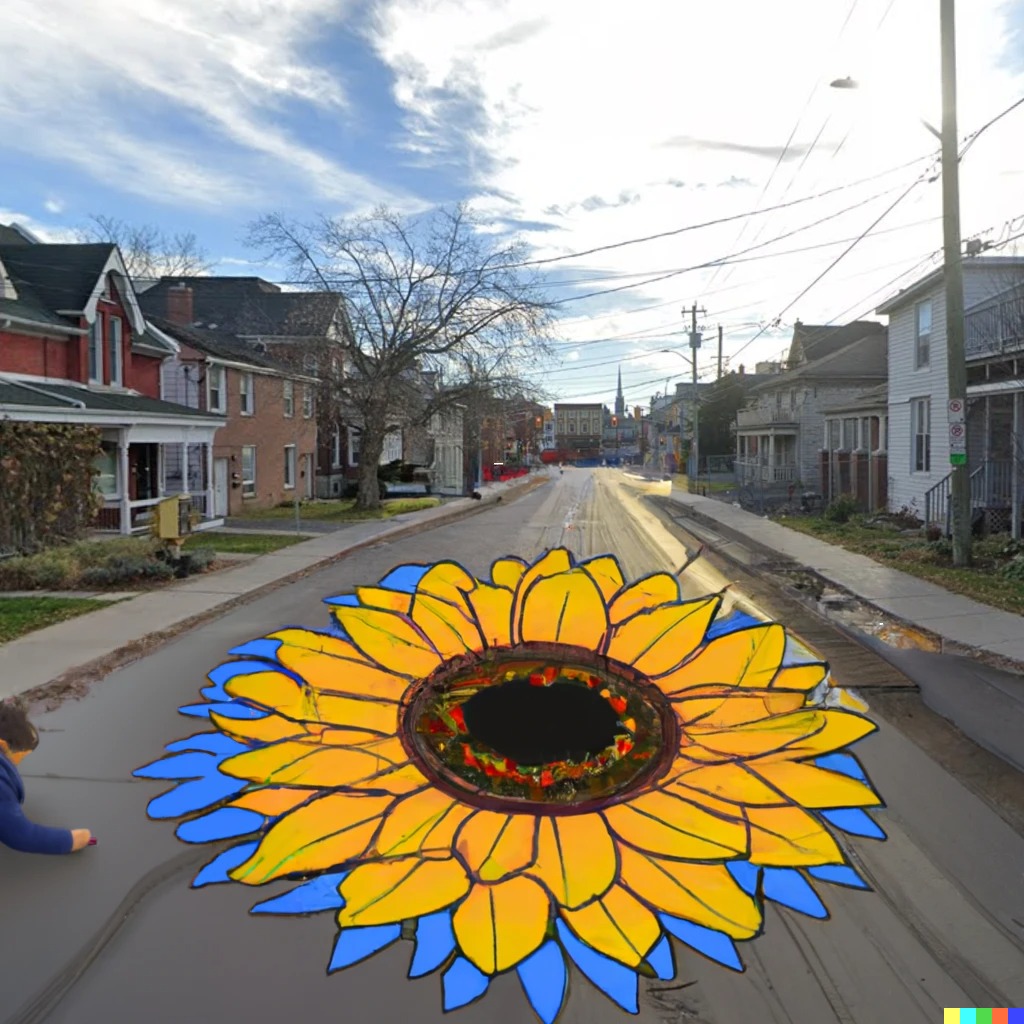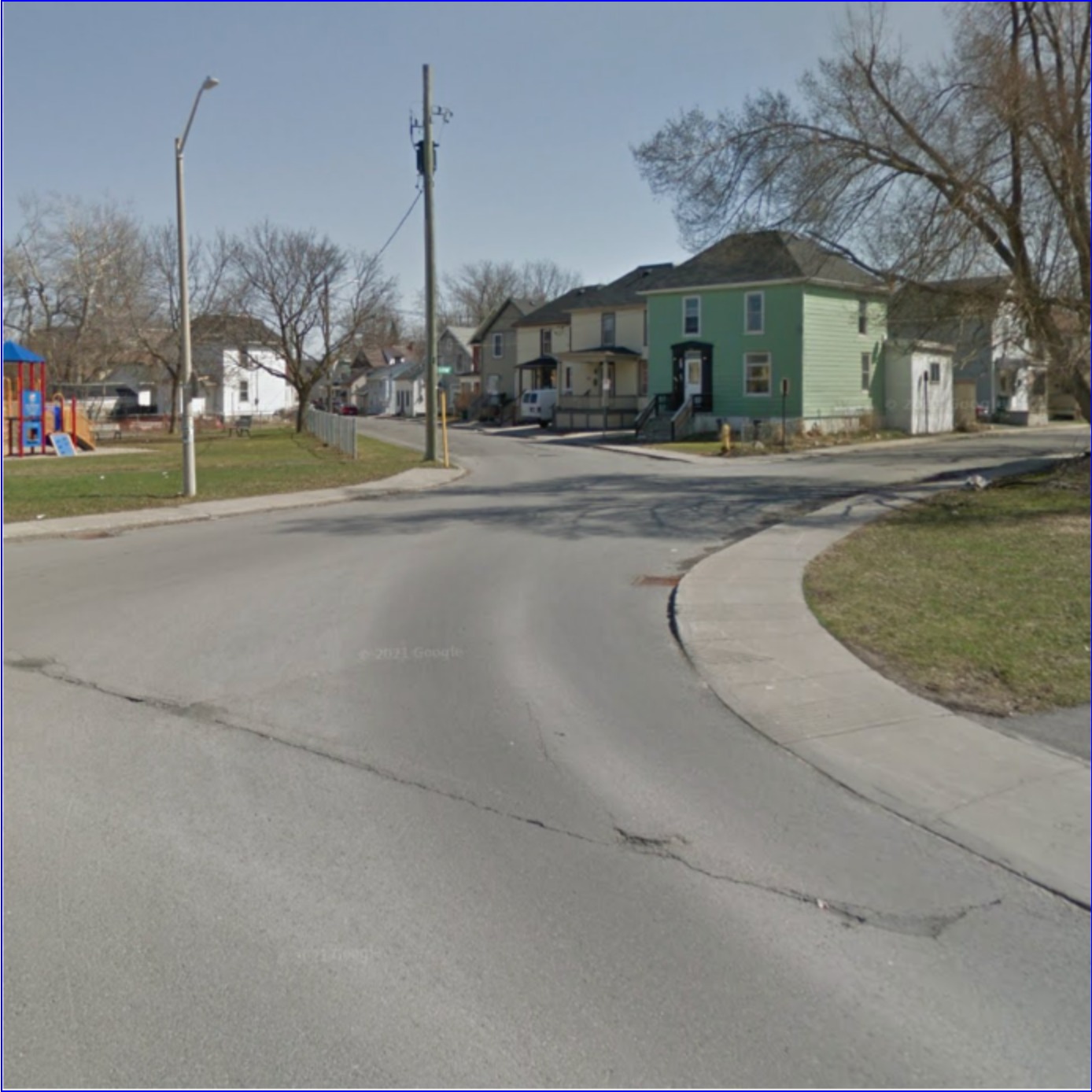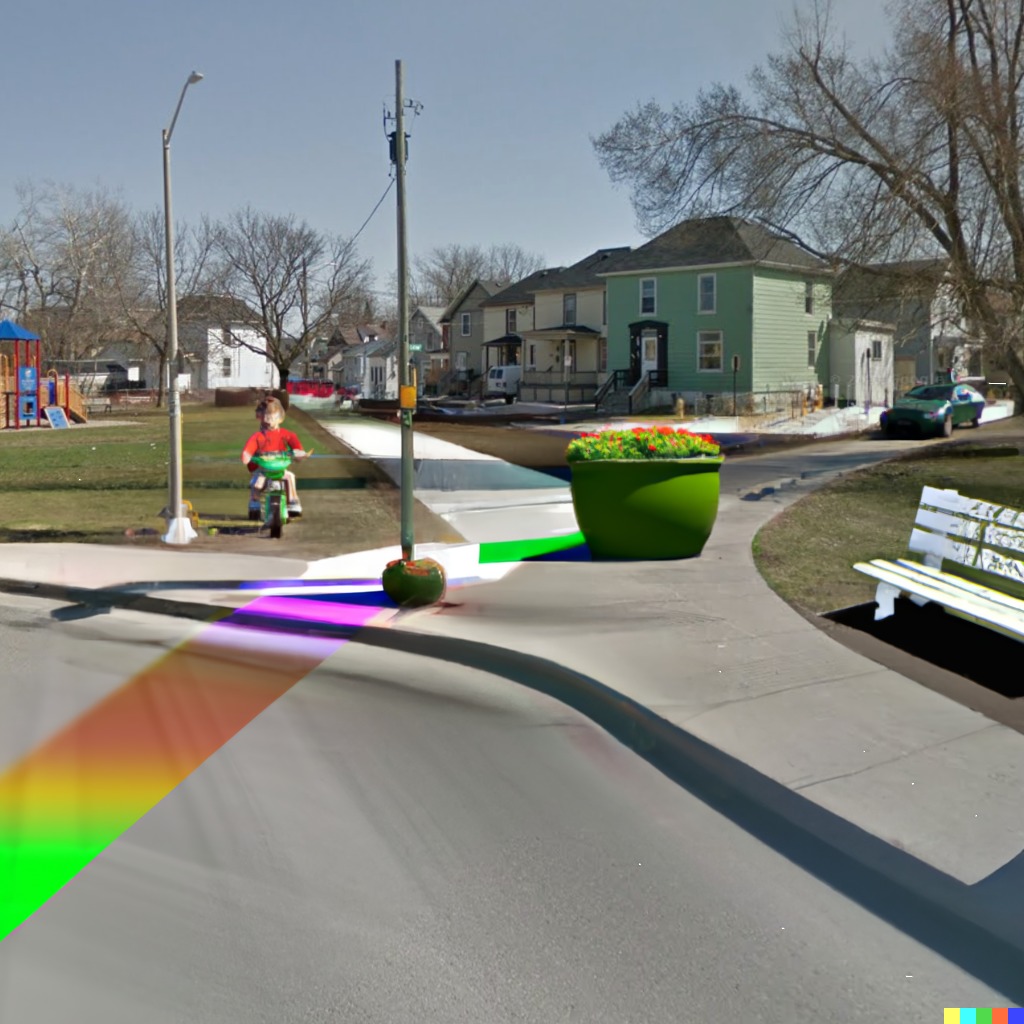‘Artificial Intelligence’ (AI) and machine learning algorithms have gained a lot of buzz recently, most notably AI-image and art generation programs and AI-text applications like ChatGPT.
While completing a graduate degree in Urban Planning, I became interested in urban design and was struck by the work of BetterStreetsAI. A group of folks who were using an AI-image generator like DALLE2 in a completely novel way – using AI to redesign better and more human-scaled streets.
Being able to show a picture of what someone is thinking or what they want can be a powerful communication tool. Creating photo-realistic streets can also take a ton of work, and usually are not the work of folks with basic design skills. All to say, I was excited to give it try and see how AI could help me re-envision streets in my local neighbourhood. Here are some of my results!
AI-generated streetscapes are a lot of fun. After some initial time tinkering and learning how best to use DALLE2, each image took about 5-10 minutes to make, with some of the more layered images that feature people and furniture taking between 20-30 minutes. Simply erasing cars and adding grass, about one minute of work, can do a lot in terms of helping folks think about the streets as public spaces.
It’s certainly not perfect. Images are often distorted, faces always look creepy, and text never works out. That said, it can also create things I could not have imagined based on simple prompts (“bicycle statue made of flowers”). Here are some of my favourite playful mishaps without original images or intended purpose.
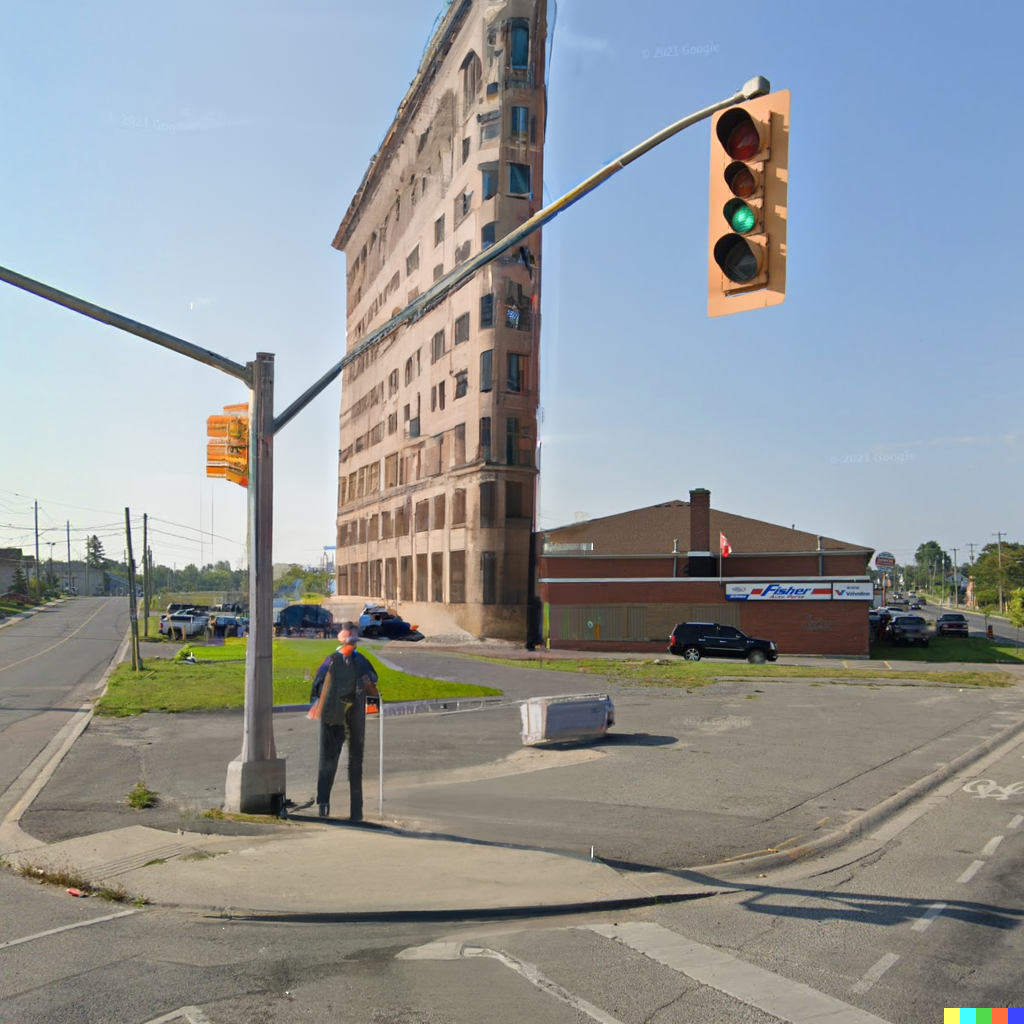
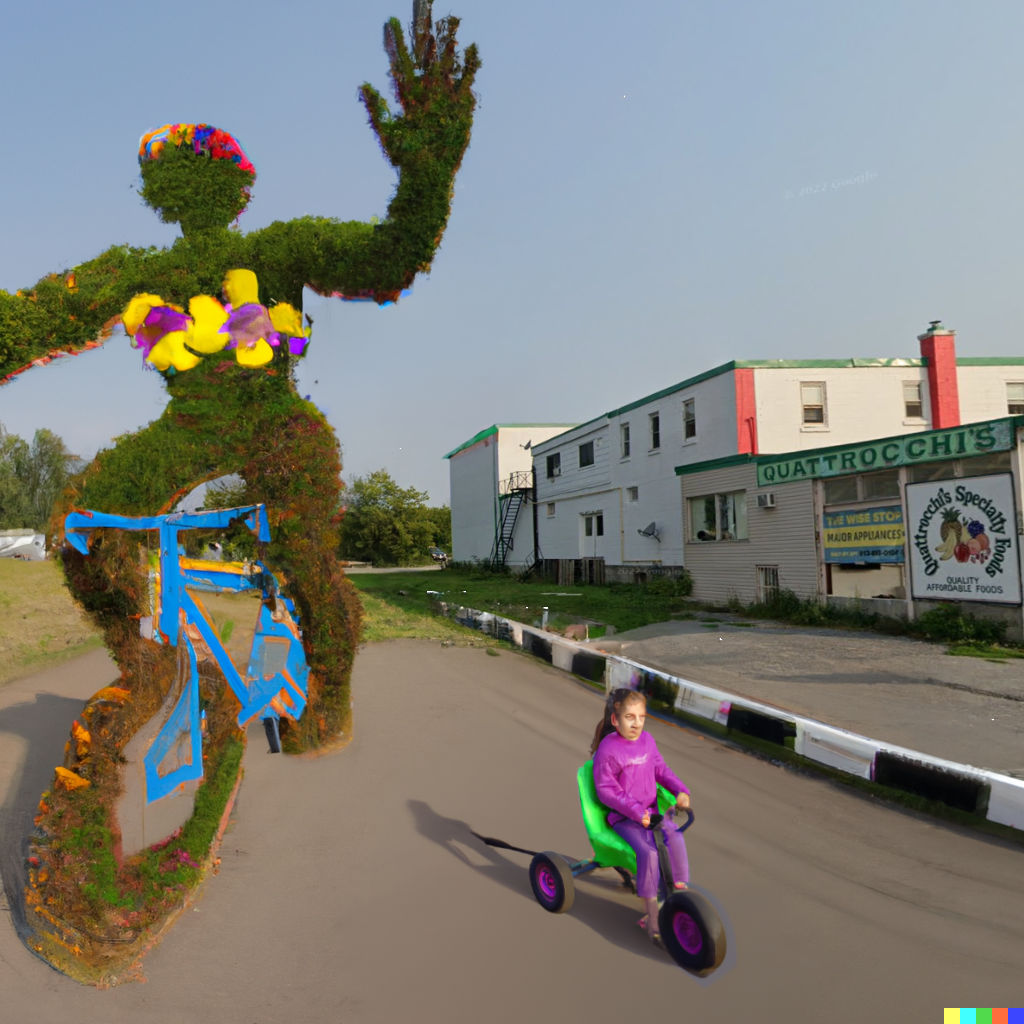
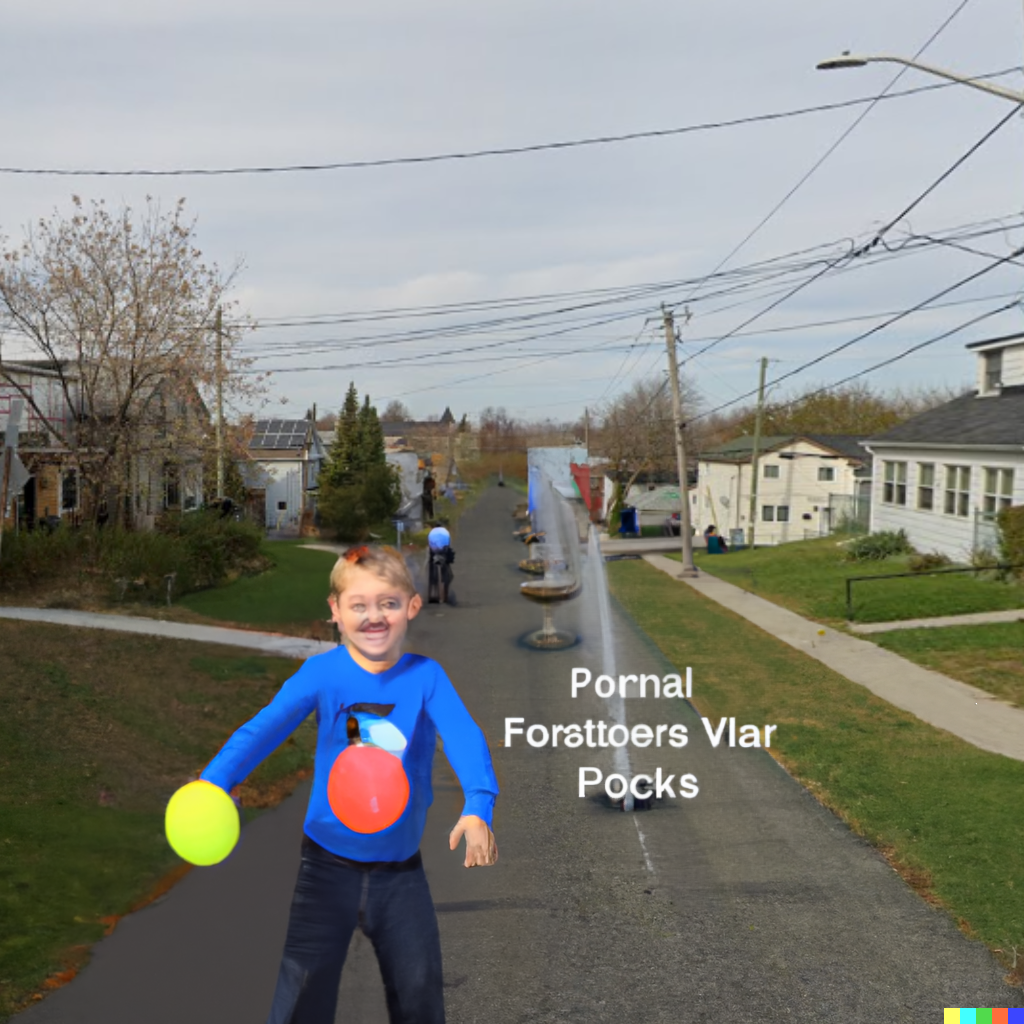
Based on this experience, I will certainly be using DALLE2 and other image generators in the future when working with community groups. I could imagine supporting neighbourhood or youth groups, and asking them to discuss places, words, and things that make spaces feel inviting, and then replicating, live, those values and images onto a local street image, as a way of guiding and prompting discussion and vision.
